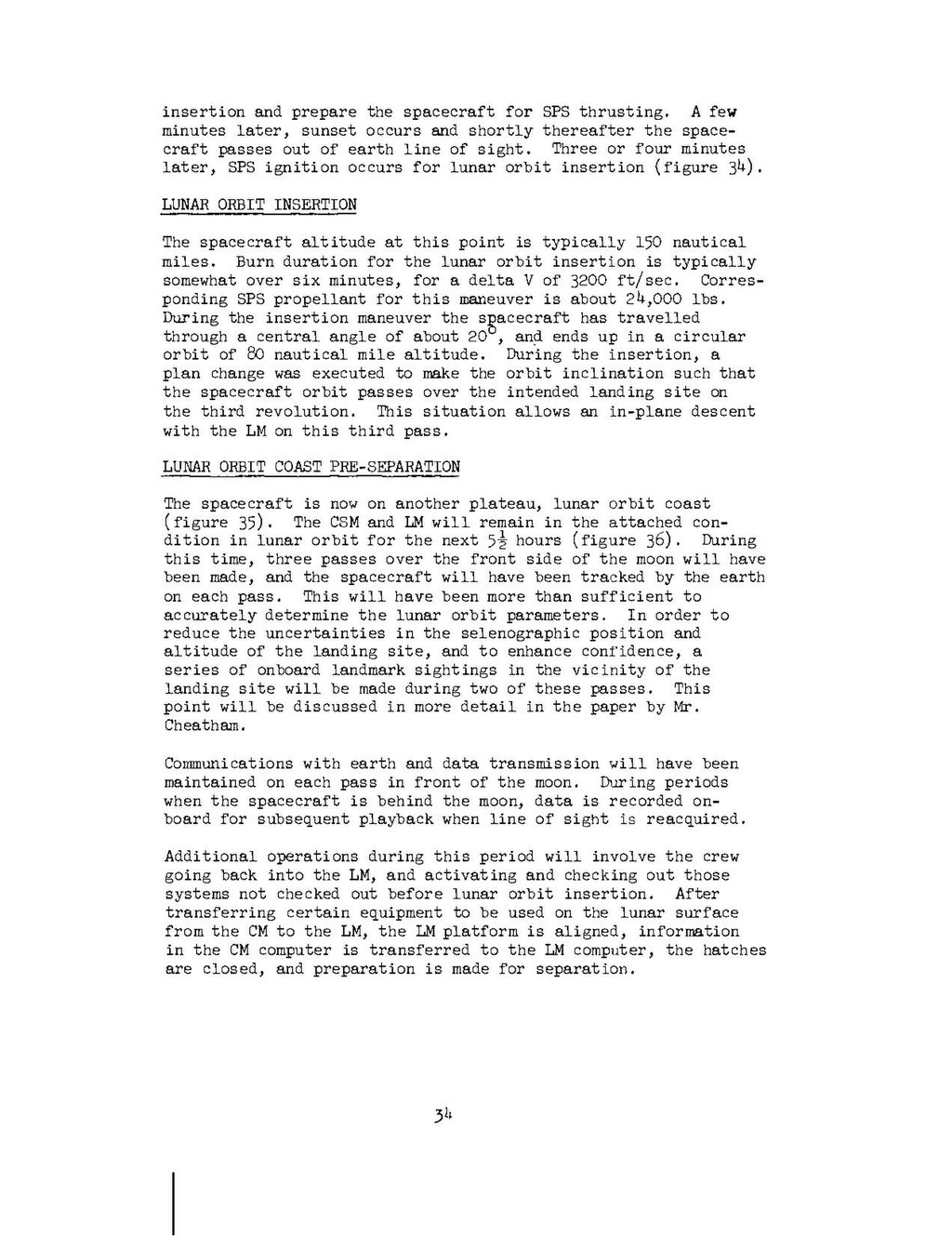insertion and prepare the spacecraft for SPS thrusting. A few minutes later, sunset occurs and shortly thereafter the spacecraft passes out of earth line of sight. Three or four minutes later, SPS ignition occurs for lunar orbit insertion (figure 34).
LUNAR ORBIT INSERTION
The spacecraft altitude at this point is typically 150 nautical miles. Burn duration for the lunar orbit insertion is typically somewhat over six minutes, for a delta V of 3200 ft/sec. Corresponding SPS propellant for this maneuver is about 24,000 lbs. During the insertion maneuver the sgacecraft has travelled through a central angle of about 20°, and ends up in a circular orbit of 80 nautical mile altitude. During the insertion, a plan change was executed to make the orbit inclination such that the spacecraft orbit passes over the intended landing site on the third revolution. This situation allows an in-plane descent with the LM on this third pass.
LUNAR ORBIT COAST PRE-SEPARATION
The spacecraft is now on another plateau, lunar orbit coast (figure 35). The CSM and LM will remain in the attached condition in lunar orbit for the next 5½ hours (figure 36). During this time, three passes over the front side of the moon will have been made, and the spacecraft will have been tracked by the earth on each pass. This will have been more than sufficient to accurately determine the lunar orbit parameters. In order to reduce the uncertainties in the selenographic position and altitude of the landing site, and to enhance confidence, a series of onboard landmark sightings in the vicinity of the landing site will be made during two of these passes. This point will be discussed in more detail in the paper by Mr. Cheatham.
Communications with earth and data transmission will have been maintained on each pass in front of the moon. During periods when the spacecraft is behind the moon, data is recorded onboard for subsequent playback when line of sight is reacquired.
Additional operations during this period will involve the crew going back into the LM, and activating and checking out those systems not checked out before lunar orbit insertion. After transferring certain equipment to be used on the lunar surface from the CM to the LM, the LM platform is aligned, information in the CM computer is transferred to the LM computer, the hatches are closed, and preparation is made for separation.
34
